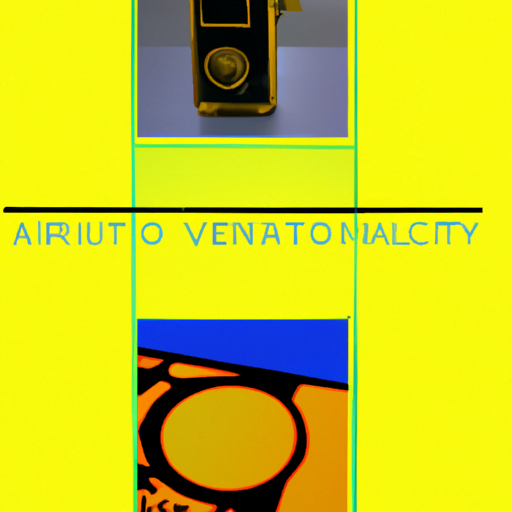-
Table of Contents
Designing for Virtual and Augmented Reality
Virtual reality (VR) and augmented reality (AR) have become increasingly popular technologies in recent years. With the rise of VR headsets and AR applications, designers are faced with new challenges and opportunities in creating immersive and interactive experiences. In this article, we will explore the key considerations and best practices for designing in the virtual and augmented reality space.
The Importance of User-Centered Design
When designing for VR and AR, it is crucial to prioritize user-centered design principles. These technologies have the potential to transport users to entirely new worlds or enhance their perception of the real world. To ensure a positive user experience, designers must understand their target audience and design with their needs and preferences in mind.
One of the key aspects of user-centered design is usability testing. By conducting user testing sessions, designers can gather valuable feedback on the effectiveness and intuitiveness of their designs. This feedback can then be used to iterate and improve the user experience.
Creating Immersive Environments
One of the main goals of VR and AR design is to create immersive environments that engage and captivate users. To achieve this, designers must pay attention to various elements, including:
- Visuals: High-quality graphics and realistic textures are essential for creating a convincing virtual environment. Designers should strive for visually stunning and detailed scenes that transport users to another reality.
- Audio: Sound plays a crucial role in enhancing the immersion of VR and AR experiences. Spatial audio, which simulates sound coming from different directions, can greatly enhance the sense of presence for users.
- Interactivity: Allowing users to interact with the virtual environment is key to creating a sense of agency and engagement. Designers should consider incorporating interactive elements such as objects that can be manipulated or environments that respond to user actions.
By carefully considering these elements, designers can create immersive environments that provide users with a truly captivating experience.
Designing for Comfort and Safety
While creating immersive environments is important, designers must also prioritize the comfort and safety of users. VR and AR experiences can sometimes cause discomfort or even motion sickness if not designed properly. To mitigate these issues, designers should consider the following:
- Field of view: Limiting the field of view can help reduce the risk of motion sickness. By carefully designing the visual elements within the user’s field of view, designers can create a more comfortable experience.
- Smooth movement: Sudden or jerky movements can also contribute to discomfort. Designers should aim for smooth and natural movements to minimize the risk of motion sickness.
- Physical comfort: VR headsets can be heavy and uncomfortable to wear for extended periods. Designers should consider the ergonomics of the headset and provide options for adjustments to ensure a comfortable fit.
By prioritizing comfort and safety, designers can create VR and AR experiences that users can enjoy for longer durations without negative side effects.
Case Studies: Successful VR and AR Designs
Several companies have successfully implemented VR and AR designs to create engaging and memorable experiences. Let’s take a look at a few notable examples:
1. Pokémon GO
Pokémon GO, an AR mobile game developed by Niantic, took the world by storm in 2016. The game allowed players to capture virtual Pokémon in real-world locations using their smartphones. By blending the virtual and physical worlds, Pokémon GO created a unique and immersive experience that captivated millions of players worldwide.
2. The VOID
The VOID is a company that specializes in location-based VR experiences. They have created immersive VR attractions that combine physical sets, props, and VR headsets to transport users to different worlds. By providing a multi-sensory experience, The VOID has redefined the possibilities of VR entertainment.
3. Tilt Brush
Tilt Brush, developed by Google, is a VR application that allows users to paint in 3D space using virtual reality. This innovative tool has empowered artists and designers to create stunning virtual artworks. Tilt Brush demonstrates the creative potential of VR and how it can be used as a medium for artistic expression.
The Future of VR and AR Design
As VR and AR technologies continue to evolve, the possibilities for design are expanding. Here are some trends and predictions for the future of VR and AR design:
- Social VR: Virtual reality has the potential to revolutionize social interactions by allowing people to connect and communicate in virtual spaces. Designers will play a crucial role in creating intuitive and immersive social VR experiences.
- AR in everyday life: Augmented reality is expected to become more integrated into our daily lives. From navigation apps to virtual shopping experiences, designers will need to consider how AR can seamlessly blend with the real world.
- Accessibility: As VR and AR become more mainstream, designers will need to prioritize accessibility. This includes considerations for users with disabilities and designing experiences that are inclusive for all.
Summary
Designing for virtual and augmented reality presents unique challenges and opportunities. By prioritizing user-centered design, creating immersive environments, considering comfort and safety, and drawing inspiration from successful case studies, designers can create compelling and memorable VR and AR experiences. As these technologies continue to advance, designers will need to stay at the forefront of innovation to shape the future of VR and AR design.
